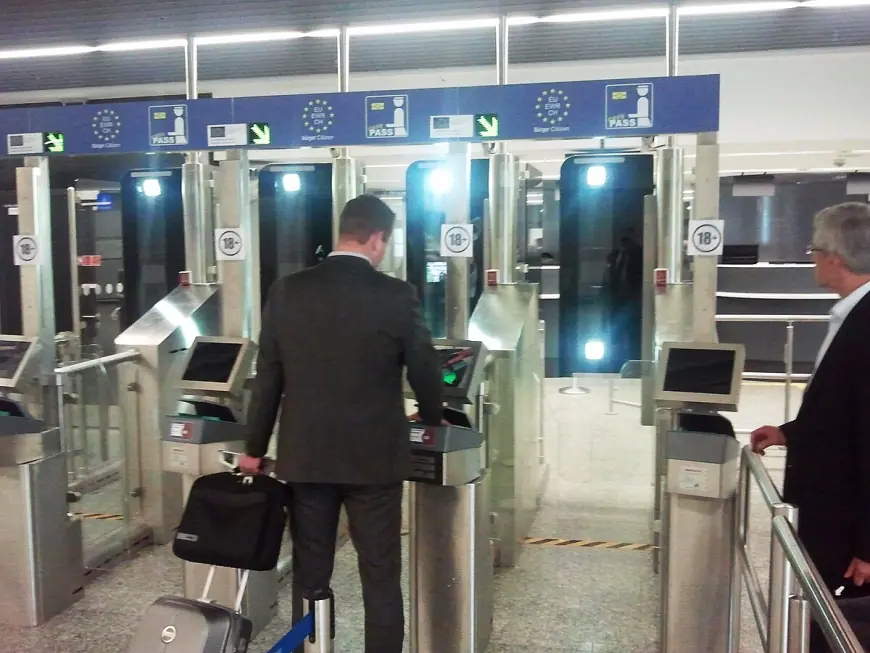Automated Border Control Market Insights: Emerging Technologies Driving Global Security and Efficiency Trends
#AutomatedBorderControl #BorderSecurity #BiometricTechnology #SmartAirports #TravelSecurity
The Automated Border Control Market is witnessing unprecedented growth, driven by increasing demand for secure, efficient, and technologically advanced border management solutions. Governments and airport authorities worldwide are investing in automated systems that enhance passenger processing, reduce wait times, and strengthen security measures. These systems leverage cutting-edge technologies such as biometric recognition, facial scanning, fingerprint verification, and machine learning algorithms to streamline border operations, ensuring both convenience and safety for travelers. Rising concerns over cross-border security threats, coupled with the rapid expansion of global air travel, have made automated border control systems an essential component of modern border management infrastructure.
Market Drivers
Several factors are fueling the growth of the automated border control market. Increasing international passenger traffic has created a pressing need for faster and more efficient border processing solutions. Traditional manual checkpoints are often prone to human error and time-consuming procedures, making automated systems an attractive alternative. Biometric technologies, such as iris scanning, facial recognition, and fingerprint verification, are becoming increasingly sophisticated, offering accurate identification while reducing processing time. Furthermore, government initiatives and regulatory mandates to enhance national security and combat illegal immigration have accelerated the adoption of automated solutions across airports, seaports, and land borders.
Technological Innovations
Technological advancement is at the core of the automated border control market. Modern systems integrate artificial intelligence (AI), machine learning (ML), and advanced imaging technologies to improve accuracy and operational efficiency. AI-powered analytics can predict passenger flow, detect anomalies, and optimize staffing requirements, significantly enhancing border security and management. Additionally, multi-biometric systems that combine facial, fingerprint, and iris recognition provide a higher level of security while maintaining a seamless travel experience. Cloud-based border management solutions are also emerging, allowing real-time data access and centralized monitoring, which further improves operational efficiency.
Regional Insights
The automated border control market exhibits significant regional variations. North America and Europe are leading in terms of adoption, primarily due to advanced technological infrastructure, high passenger volumes, and stringent security regulations. The Asia-Pacific region is expected to witness rapid growth, driven by increasing international travel, rising government investments, and expanding airport networks. Middle Eastern countries are also investing heavily in automated systems as part of their smart airport initiatives, aiming to enhance passenger experience and operational efficiency. Emerging markets in Latin America and Africa are gradually adopting automated border solutions to improve security, reduce congestion, and modernize existing infrastructure.
Market Challenges
Despite its growth potential, the automated border control market faces several challenges. High initial installation costs and complex integration with legacy systems can deter adoption, especially in developing regions. Privacy concerns and data protection regulations are critical considerations, as biometric and personal data collection raises ethical and legal questions. Additionally, system reliability and accuracy are paramount; technical failures or false rejections can disrupt operations and negatively impact user experience. Manufacturers and service providers are addressing these challenges through enhanced system design, rigorous testing, and compliance with international security standards.
Key Players and Competitive Landscape
The automated border control market is highly competitive, with major players focusing on innovation, strategic partnerships, and market expansion. Leading companies are developing next-generation solutions with integrated AI, biometric, and cloud-based capabilities. Collaborations between technology providers, governments, and airport authorities are common, enabling customized solutions tailored to regional requirements. Continuous research and development efforts ensure that automated border control systems remain effective against evolving security threats while enhancing efficiency and passenger convenience.
Future Outlook
The future of the automated border control market is promising, with sustained growth expected across regions. Increasing global mobility, security concerns, and the drive for operational efficiency will continue to fuel demand for automated solutions. Emerging trends such as mobile-based biometrics, self-service kiosks, and contactless verification are poised to transform border management further. The integration of AI and predictive analytics will enable proactive security measures, while seamless interoperability between airports, seaports, and land borders will improve overall traveler experience. As nations increasingly embrace smart border initiatives, the automated border control market will play a pivotal role in shaping the future of international travel and security.
What's Your Reaction?
 Like
0
Like
0
 Dislike
0
Dislike
0
 Love
0
Love
0
 Funny
0
Funny
0
 Angry
0
Angry
0
 Sad
0
Sad
0
 Wow
0
Wow
0



















































